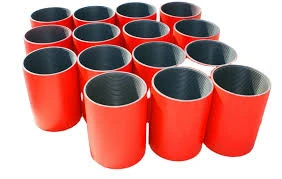- Afrikaans
- Albanian
- Amharic
- Arabic
- Armenian
- Azerbaijani
- Basque
- Belarusian
- Bengali
- Bosnian
- Bulgarian
- Catalan
- Cebuano
- Corsican
- Croatian
- Czech
- Danish
- Dutch
- English
- Esperanto
- Estonian
- Finnish
- French
- Frisian
- Galician
- Georgian
- German
- Greek
- Gujarati
- Haitian Creole
- hausa
- hawaiian
- Hebrew
- Hindi
- Miao
- Hungarian
- Icelandic
- igbo
- Indonesian
- irish
- Italian
- Japanese
- Javanese
- Kannada
- kazakh
- Khmer
- Rwandese
- Korean
- Kurdish
- Kyrgyz
- Lao
- Latin
- Latvian
- Lithuanian
- Luxembourgish
- Macedonian
- Malgashi
- Malay
- Malayalam
- Maltese
- Maori
- Marathi
- Mongolian
- Myanmar
- Nepali
- Norwegian
- Norwegian
- Occitan
- Pashto
- Persian
- Polish
- Portuguese
- Punjabi
- Romanian
- Russian
- Samoan
- Scottish Gaelic
- Serbian
- Sesotho
- Shona
- Sindhi
- Sinhala
- Slovak
- Slovenian
- Somali
- Spanish
- Sundanese
- Swahili
- Swedish
- Tagalog
- Tajik
- Tamil
- Tatar
- Telugu
- Thai
- Turkish
- Turkmen
- Ukrainian
- Urdu
- Uighur
- Uzbek
- Vietnamese
- Welsh
- Bantu
- Yiddish
- Yoruba
- Zulu
casing pup joint
Understanding Casing Pup Joints in Oil and Gas Operations
In the oil and gas industry, casing pup joints play a vital role in the efficient completion and maintenance of wells. These short lengths of pipe are typically used to connect larger sections of casings, providing essential flexibility and adaptability during drilling and production operations.
Casing pup joints are usually manufactured from high-strength steel and can be customized in terms of length and diameter to fit specific well design requirements. Their primary purpose is to allow for the accommodation of thermal expansion and contraction of the casing strings, particularly in deep wells where temperature variations can be significant. By using pup joints, drilling engineers can better manage these changes, ensuring the integrity and stability of the wellbore.
Another critical function of casing pup joints is to facilitate the proper alignment of casing strings
. During the drilling process, maintaining a straight and secure casing is essential for preventing blowouts and ensuring optimal fluid flow. Pup joints can help achieve this alignment, allowing for smoother transitions between different sections of casing.casing pup joint

The installation process of casing pup joints is relatively straightforward. They are typically threaded on both ends, which allows for easy connection to other casing components. However, proper torque specifications must be followed to ensure a tight seal and to prevent any potential failure during operations.
Moreover, the selection of the right type of pup joint is crucial. Factors such as pressure ratings, material strength, and compatibility with other equipment must all be considered. Engineers often refer to industry standards and guidelines to choose the appropriate pup joint for their specific application.
Regular inspection and maintenance of casing pup joints are also necessary to ensure their longevity and performance. Corrosion, wear and tear, and other forms of degradation can compromise their integrity over time. Therefore, operators must conduct routine checks and replace any joints that show signs of failure.
In conclusion, casing pup joints are integral components of oil and gas well operations. Their ability to connect casing strings while allowing for flexibility and alignment makes them a critical asset in maintaining the safety and efficiency of drilling activities. By understanding their function and importance, industry professionals can ensure better design and execution of well completion strategies.
-
Tubing Pup Joints: Essential Components for Oil and Gas OperationsNewsJul.10,2025
-
Pup Joints: Essential Components for Reliable Drilling OperationsNewsJul.10,2025
-
Pipe Couplings: Connecting Your World EfficientlyNewsJul.10,2025
-
Mastering Oilfield Operations with Quality Tubing and CasingNewsJul.10,2025
-
High-Quality Casing Couplings for Every NeedNewsJul.10,2025
-
Boost Your Drilling Efficiency with Premium Crossover Tools & Seating NipplesNewsJul.10,2025







